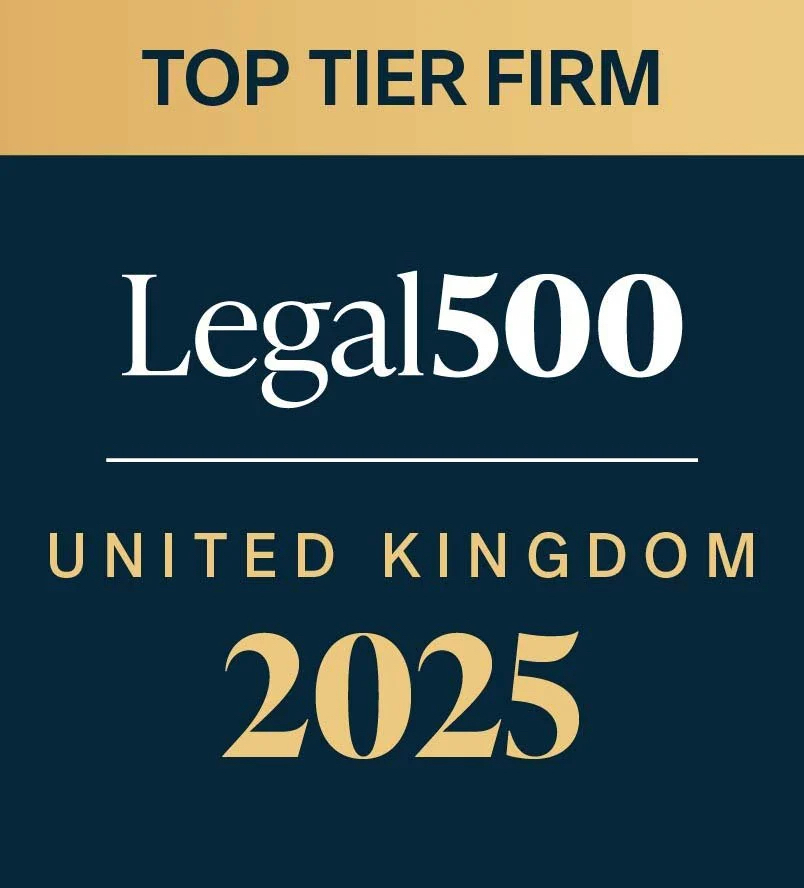Offshore Wind – is the OREAP in the doldrums?

During the course of 2022, the Department for the Economy (DfE) led the development of the Draft Offshore Renewable Energy Action Plan (OREAP)[1], taking the first steps towards delivering on the commitments established in the Energy Strategy for Northern Ireland 2021 (Energy Strategy), and specifically Action 14 of the Energy Strategy, to “Develop an action plan to deliver 1 GW of offshore wind from 2030’.
Although the Draft OREAP is a welcome step forward, there are concerns within the industry that it does not go far enough to set ambitious targets and accountable timescales in order to achieve the 80% by 2030 renewable electricity target set by the Climate Change (Northern Ireland) Act 2022 (Climate Change Act). When we look at our GB neighbours who have recently set an enormous target of 50GW by 2030 and RoI, (who have a 7GW by 2030 target, a target of 1GW offshore in advance of 2030 if feasibly possible does not compare in terms of ambition.
The OREAP has been developed around five key themes. In this article we will explore these strategic priorities and the corresponding actions that will be required to be taken by stakeholders if the wind energy targets are to be met and what, if any, progress has been made to date.
1. Sustainability and Co-Existence
Action one under the first theme commits the DfE to procure external consultants to conduct the Strategic Environmental Assessment and Habitat Regulations Assessment (SEA/HRA) for Offshore Renewable Energy in the Northern Ireland Marine Area in 2022. It would appear that this timeline has slipped significantly as the consultants commissioned to produce the SEA Environmental Report have only issued their SEA Scoping Report[2] to the relevant Statutory Consultation Bodies for comment on 14 September 2023 which will take up to five weeks. The SEA Environmental Report will assess how the OREAP interacts with other key relevant plans and programmes along with producing environmental protection objectives. The OREAP Steering Group is hopeful to get a first draft of the consultant’s findings in January 2024 and the full report is expected to be published in June 2024.
As noted throughout the 22 actions in the Draft OREAP, the SEA Environmental Report underpins all five key themes, therefore, the acceleration of this timeline is critical if developers have any chance of developing offshore wind by 2030. We understand that SONI and TCE are being kept apprised ‘in real time’ of all developments relating to the SEA/HRA which is good news and it means that other workstreams can be progressed contemporaneously with the report.
2. Enabling Frameworks
This second theme breaks down some of the key steps to be taken by the relevant stakeholders to implement a coherent and coordinated process for offshore development. Planning, licences and consents are to be a key focus of the OREAP to allow for a streamlined approach to obtaining the relevant consents and agreements required for offshore projects. The Draft OREAP envisages that a Memorandum of Understanding (MoU) is to be created between the DfE, the Department for Infrastructure (DfI) and the Department of Agricultural, Environment and Rural Affairs to allow for the prioritisation of consents and application processes related to offshore projects in 2023. This will of course depend on DfI having sufficiently resourced planning teams to manage the application processes which continues to be a major barrier for renewable developers. It is our understanding that the MoU has not yet been agreed between these departments.
The Draft OREAP also pledges to run a consultation on a decommissioning regime for offshore renewable energy installations in 2023. However, with no sitting Executive, it will be challenging to legislate for a decommissiong regime in Northern Ireland and to date, there has been no suggestion of this consultation. There is also growing concern among the industry that the absence of a decommissioning may prevent The Crown Estate (TCE) from granting any leasing rights to developers until such decommissioning regime is established. If this is the case, it is unlikely that any offshore wind projects will be commissioned by 2030.
Actions 7 and 8 of the Draft OREAP focus on the design of a future leasing round for offshore wind. DfE needs definitive clarity from TCE on whether the next leasing round will be delivered in time (and by no later than 2025) for NI offshore projects to be connected by 2030. It is clear from TCE’s annual report 2022/23[3] and the Statement of Intent[4] signed by the TCE and DfE earlier this year that there is strong collaboration between the departments to create the right conditions for offshore wind leasing. Industry members met with TCE on 24 May 2023 to highlight the need to accelerate timelines on a leasing round for offshore wind in NI which TCE accepted.
If TCE’s current timelines cannot be accelerated then the industry is hopeful that a specific NI leasing round, separate from England & Wales, may be held which would follow the precedent set by TCE with the Celtic Sea floating offshore leasing round announced in July 2023.
3. Electricity Network
The OREAP acknowledges the interdependency of NI’s electricity network with any planned offshore projects. As such, a working group has been established to consider offshore transmission arrangements and related grid development. The OREAP recognises the need to determine the amount of capacity of offshore wind to be targeted in the short, medium and long term however this action point is pushed out to 2024. It is clear from the Energy Strategy that offshore development is required to go beyond 70% renewable generation, therefore, clearer targets must be set in this regard to inform potential investment. These targets will also assist in highlighting the scale of grid development works to be undertaken by SONI and NIE Networks. Currently, SONI have only committed to an incremental increase in the amount of offshore wind to be connected to the grid from 100MW to 500MW by 2030 as outlined in the updated Shaping our Electricity Future Roadmap version 1.1[5] published in July of this year. This increase does not align with potential demand when there are three projects currently in the public domain and a pipeline of 3GW to be added[6].
4. Economic Growth
A report undertaken by BVG Associates at the request of Renewable NI[7] estimates that the addition of 1.5GW of offshore wind in Northern Ireland would result in enough clean electricity to power 1.6 million homes, £2.4bn GVA (gross value added) and up to 1,500 jobs at peak construction. For this to happen, certainty and assurance on the route to market for offshore wind will need to be established and quickly. Eight action points have been identified under theme 4 however, no indicative timeline is presented for when the NI RESS scheme will be launched and contracts for either onshore of offshore wind offered. OREAP needs to include a clear timeline on the route to market to encourage investment and de-risk projects.
5. Legislation and Regulation
Under the OREAP, legislation and regulations will be reviewed to consider what changes are necessary to facilitate the delivery of offshore wind and low-carbon technology ambitions as set out in the Energy Strategy and strengthened by the Climate Change Act. The indicative timelines outlined in the Draft OREAP suggest that these legislative changes will be actioned in 2024/2025 and beyond. We recognise that in the absence of a sitting Assembly, it is difficult to bring about the requisite legislative and regulatory changes, and it will be interesting to see if the UK government seeks to intervene and prioritise the delivery of legislation for offshore wind in NI in a bid to contribute to the UK’s wider target of 50GW of offshore by 2030.
Conclusion
The OREAP represents a significant step forward in Northern Ireland’s race to decarbonisation and reinforces the momentum and ambition set by the Energy Strategy and Climate Change Act. However, as noted above, there is still much work to do. The proposed timeline to generate and transmit 1GW of offshore wind in advance of 2030 demonstrates that the decommissioning regimes, planning and consenting, route to market, skills and supply chain among them, are interconnected and mutually dependent. However, as a matter of priority, DfE requires confirmation on the next seabed leasing round for NI offshore wind projects. Until a seabed lease is awarded, developers cannot apply for grid connection, planning or commence installation and commissioning works therefore, time is of the essence. We hope to see this sense of urgency reflected in the OREAP and DfE’s discussions with TCE if Northern Ireland is to remain a viable and competitive option for offshore investment and development.
If you would like any further information or advice, please contact le-ann Campbell from the Energy & Renewables team.
*This information is for guidance purposes only and does not constitute, nor should be regarded, as a substitute for taking legal advice that is tailored to your circumstances.
[1] ‘Draft Offshore Renewable Energy Action Plan consultation’ https://www.economy-ni.gov.uk/consultations/draft-offshore-renewable-energy-action-plan
[2] ‘Offshore Renewable Energy Action Plan – SEA Scoping Report’ https://www.economy-ni.gov.uk/publications/offshore-renewable-energy-action-plan-sea-scoping-report
[3] ‘The Crown Estate Annual Report 2022/23’ https://www.thecrownestate.co.uk/annual-report-2023/
[4] ‘Department for the Economy and The Crown Estate – Statement of Intent’ https://www.economy-ni.gov.uk/publications/statement-intent-between-dfe-and-crown-estate
[5] ‘Shaping our Electricity Future Roadmap Version 1.1.’ https://www.soni.ltd.uk/the-grid/shaping-our-electricity-f/
[6] ‘The Clean Revolution – Building Northern Ireland’s Offshore Wind Industry’ Policy - RenewableNI
[7] ‘The Clean Revolution – Building Northern Ireland’s Offshore Wind Industry’ Policy - RenewableNI
About the author






